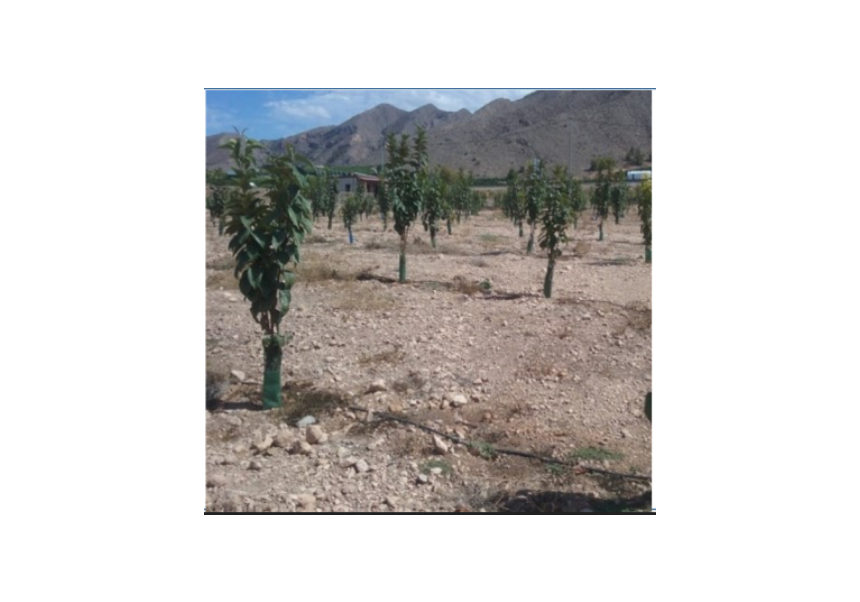
Scientists from the Desertification Research Centre (CIDE, CSIC-UV-GVA) and the Center for Edaphology and Applied Biology of Segura (CEBAS-CSIC) prove that using a single drip-holder line would optimize water use in these crops.
The study contributes to establish guidelines to improve the agronomic design of irrigation, facilitating the cultivation tasks and even increasing production.
A group of researchers from the Desertification Research Centre (CIDE), a joint centre of the Spanish National Research Council (CSIC), the Universitat de València and the Valencia Regional Government, and the Segura Centre for Soil Science and Applied Biology (CEBAS-CSIC), have carried out a study to establish the optimal method for irrigating persimmon and lemon plantations in semi-arid climates using drip irrigation. The study concludes that a single drip line is sufficient to optimise yield and water use efficiency, both in the case of lemon trees and young persimmon trees, which increased their production by up to 13%.
The study, published in the open access journal Water, responds to the needs of the production sector to find the best way to apply drip irrigation to crops such as persimmon and lemon trees, which are of great economic importance in the Valencia Region and the Region of Murcia. In it, researchers from CIDE and CEBAS tried to determine the optimal way of placing drip irrigation hoses (number and arrangement) in a fruit orchard.
In fruit orchards, one or several drip lines can be used to supply water to the trees. A single line arrangement is more economical and facilitates cultivation, but may not provide sufficient wetted soil volume. This work compares the agronomic response of the trees as a function of the number of drip lines used. "The main conclusion is that, for lemon trees on clay soil, a single drip line is sufficient to optimise yield and water use efficiency. Similarly, for young persimmon trees, the arrangement of drippers in a single dripper line optimises water productivity," says Diego Intrigliolo, CIDE researcher and one of the authors of the study.
The study helps to establish guidelines to optimise the agronomic design of irrigation, facilitating cultivation tasks. "The application of irrigation by means of a drip line provides the main added value of a more economical irrigation installation and easier management of the orchard, given that it facilitates the cultivation work, as it has a single hose that is also close to the trunk", explains the CIDE researcher.
Increased production
In the case of the lemon tree, similar results were obtained using 1 or 2 drip lines in terms of production, water use and efficiency. This is because the trial was carried out by applying the same irrigation dose using one or two drip lines. In the case of persimmon, with young trees, a single dripper line increased yield by 13 % compared to two dripper lines.
To increase water use efficiency, deficit irrigation was carried out in the trial for lemon, an optimisation strategy in which irrigation is applied during the drought-sensitive phases of a crop. In this case, deficit irrigation, regardless of whether it is applied with one or two drip lines, increases water use efficiency by up to 35%.
The study was carried out in the town of Santomera (Murcia), in collaboration with the Murcian irrigation materials manufacturer Azud, in a clayey soil and semi-arid climate and with slightly saline irrigation water. "The results cannot be extrapolated to other crops or other soil conditions in particular. They are valid for clay soils in the case of lemon and young persimmon trees. In other crops and situations, we do not know what can happen," Diego Intrigliolo stresses.
Reference:
Margarita Parra, David Hortelano, Francisco García-Sánchez, Diego S. Intrigliolo and José S. Rubio-Asensio, Effects of Drip Irrigation Design on a Lemon and a Young Persimmon Orchard in Semi-Arid Conditions, Water 2021, 13(13), 1795. DOI: https://doi.org/10.3390/w13131795
CIDE Communication









